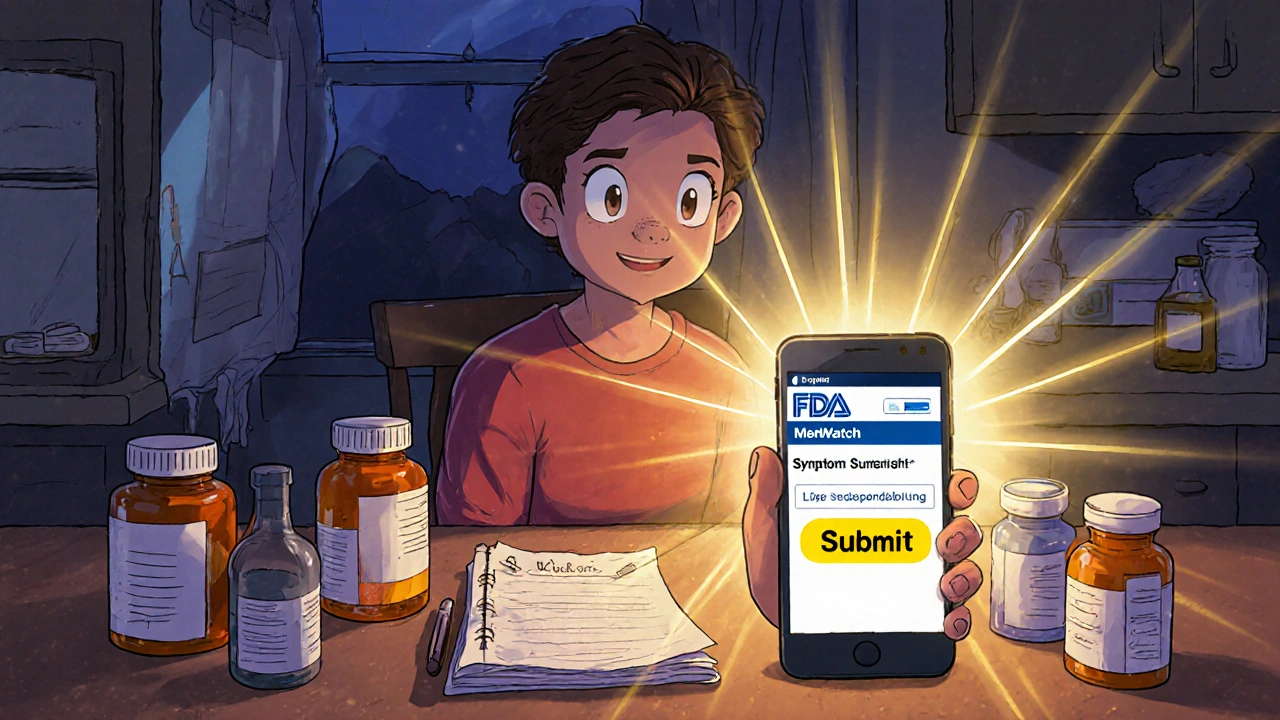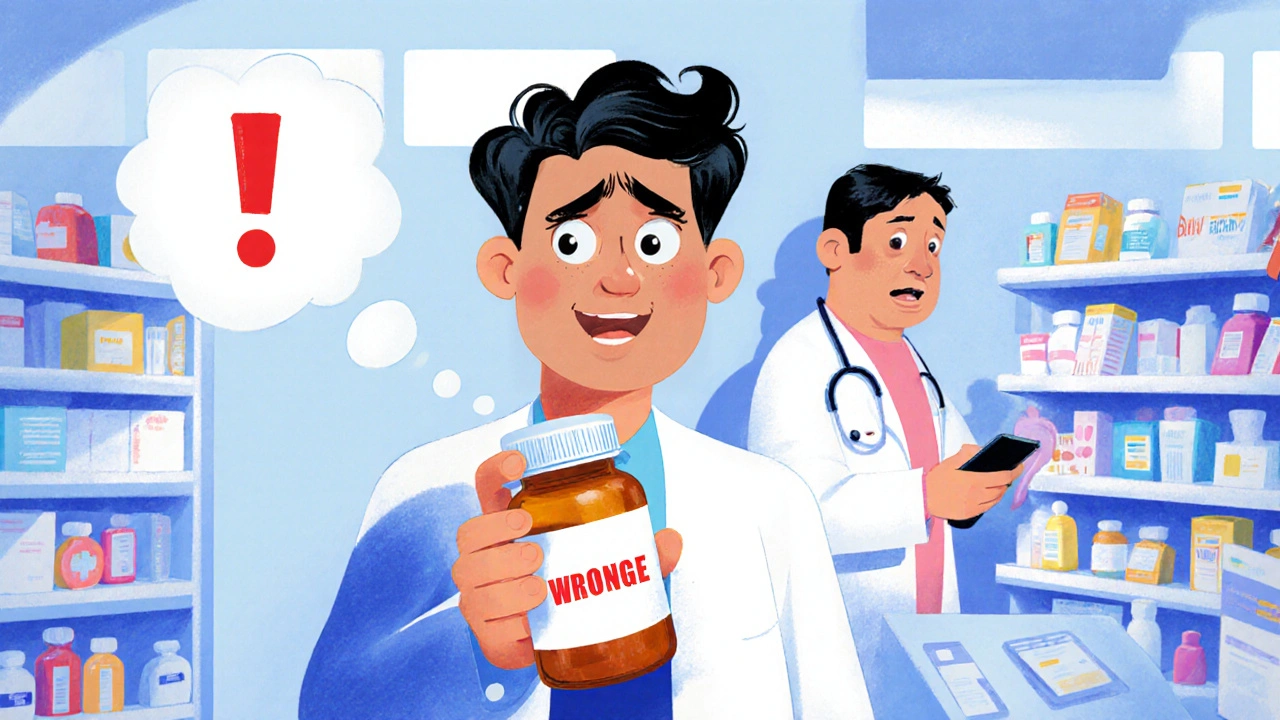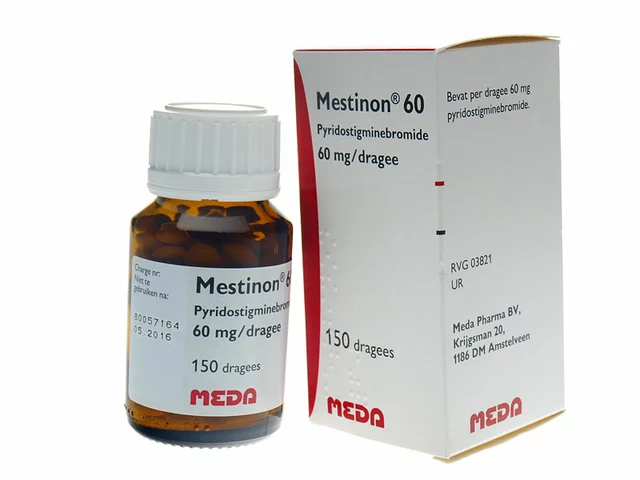Something doesn’t feel right. You took your pill at the right time, but your stomach is churning, your skin is breaking out, or you’re dizzy when you stand up. You check the label. The pill looks different. Or maybe the nurse gave you the wrong dose. Or your pharmacist handed you a different drug altogether. You’re not imagining it. This is a medication error, and it’s more common than you think.
Every year in the U.S., over 1.3 million people are injured because of mistakes with prescription drugs, over-the-counter meds, or even supplements. Many of these errors happen because someone didn’t speak up. You don’t need to be a doctor to spot a problem. You just need to know how to report it clearly - and how to make sure someone listens.
Recognize the Error Before It’s Too Late
The first step isn’t calling your provider. It’s noticing something’s wrong. Medication errors come in many forms:
- You were given the wrong drug (like getting blood pressure medicine instead of diabetes pills)
- The dose is off (10 mg instead of 5 mg, or twice as much as prescribed)
- The route is wrong (a pill meant to be swallowed was given as an injection)
- The timing is off (taken at the wrong time, or repeated too soon)
- The label doesn’t match what your doctor ordered
- You’re allergic to the drug, and no one checked
Don’t wait for symptoms to get worse. If you feel different after taking a new medication - even if it’s just mild nausea, a rash, or confusion - stop taking it and gather details. Keep the pill bottle. Take a photo of the label. Write down the time you took it, what you felt, and how long it lasted. These details matter.
Start with Your Provider - But Be Ready to Push
Your doctor, nurse, or pharmacist is your first stop. Call them. Go in person. Don’t text or email unless it’s an emergency and you have no other option. Say exactly what happened:
- "I was prescribed metformin 500 mg twice a day. I got a bottle labeled metformin 1000 mg, and I took one pill this morning. I feel shaky and sweaty."
- "The nurse gave me insulin at 8 a.m., but my chart says it should’ve been given at 7 a.m. I’ve been dizzy since."
- "This new pill looks nothing like the last one. The label says ‘Lisinopril,’ but my prescription was for ‘Lisinopril-HCTZ.’"
Bring your medication bottles, the prescription slip, and your symptom log. If you have photos of the label or side effects, show them. Most providers will take you seriously - but not all. A 2022 study found that 64% of patient reports were dismissed unless backed by medical records. If they brush you off, say: "I’m not asking for blame. I’m asking for safety. I need to know this won’t happen again."
Know the Reporting Options - And Which One Works Best
You have three real choices to report a medication error. Each has different power, speed, and impact.
1. Internal Reporting (Through Your Provider or Hospital)
This is the fastest way to fix things for you - and maybe others. Hospitals and clinics are required to track errors internally. If you report it to them, they should investigate and change their process. But here’s the catch: many systems punish staff for errors, so they hide them. Only about 14% of nurses report every mistake because they fear getting fired or reprimanded.
Still, if you report to your provider and they take it seriously, they can:
- Correct your chart
- Change how prescriptions are filled
- Train staff on double-checking meds
Ask them: "Will this be documented in your safety system?" If they say no, push. You have a right to know your concern was logged.
2. Report to the FDA’s MedWatch Program
This is where you make a national impact. The FDA gets about 140,000 reports a year - but only 14% come from patients. The rest are from doctors and pharmacists. Your report can trigger a drug recall, change a warning label, or even pull a dangerous medication off the market.
Go to fda.gov/medwatch and fill out Form 3500. You’ll need:
- Your name and contact info (you can report anonymously, but it helps if they follow up)
- The drug name, dose, and manufacturer
- When and how you took it
- Your symptoms and how long they lasted
- Any medical records or photos
Since 2023, the FDA’s online form takes under 9 minutes to complete - down from 25. And if you report through your provider first, they’re 89% more likely to get a response. Don’t wait. Submit it as soon as you can.
3. Report to ISMP (Institute for Safe Medication Practices)
ISMP runs a confidential, non-punitive reporting system used by hospitals and pharmacies. They don’t report to the FDA - they analyze trends and publish safety alerts. Since 1991, their reports have led to over 200 safety changes in drug packaging, labeling, and procedures.
Go to ismp.org and use their secure online form. You can report without giving your name. They respond with a summary of what they learned and how it might help others. It’s quiet, but powerful.

What to Do If You’re in a School or Nursing Home
If the error happened at your child’s school, a nursing home, or a long-term care facility, the rules are different.
For schools: Iowa, New York, and 46 other states require staff to report medication errors within 24 hours. The school nurse must document everything - what was given, when, and how the student reacted. Parents have the right to request a copy of that report. If you don’t get one, call the district’s health office. Only 32% of districts follow up with prevention plans - so you have to ask.
For nursing homes: Federal law requires them to report serious errors to state health inspectors within 24 hours. If your loved one was given the wrong drug and ended up in the hospital, you can file a complaint with your state’s long-term care ombudsman. They’re trained to investigate these cases.
Don’t Get Stuck in the Bureaucracy
Here’s the ugly truth: reporting a medication error often feels like shouting into a void. Patients report waiting weeks just to get their medical records. One study found it took 22.7 days on average - longer than the 30 days allowed by law.
Don’t let that stop you. Here’s how to cut through the red tape:
- Request your records in writing - not by phone. Use certified mail or a patient portal if available.
- Keep a log of every call: who you spoke to, what they said, and when.
- If you’re ignored, escalate. Ask to speak to the chief of staff, the patient safety officer, or the hospital’s compliance department.
- Take screenshots of any digital records that show the error.
And remember: you’re not alone. On Reddit, hundreds of patients have shared how they turned a scary mistake into a system-wide fix. One woman sent a photo of her incorrect pill label to MedWatch. Three days later, the FDA issued a recall. That’s the power of a clear, detailed report.

Why Reporting Matters - Even If You’re Fine
You might think, "I’m okay now. It’s not a big deal." But medication errors don’t just hurt you. They hurt the next person who gets the same drug, the same dose, the same label.
Studies show that when hospitals use non-punitive reporting systems, error rates drop by up to 75%. That’s not magic. It’s data. It’s transparency. It’s people speaking up.
Dr. Robert Wachter, a leading patient safety expert, says: "The best systems separate blame from learning. It’s not about who messed up. It’s about how the system let it happen."
When you report, you’re not accusing someone. You’re helping fix a broken process. And that’s how we make healthcare safer - one report at a time.
What Happens After You Report?
You won’t always get a call back. But that doesn’t mean nothing happened.
At your provider’s office: They should update your file and note the error in their internal safety log. You might get a call from a pharmacist or nurse asking for more info. That’s a good sign.
At the FDA: You’ll get an automated email confirmation. That’s it. They don’t respond to every report - but if your case matches others, they’ll investigate. If your report helped trigger a recall, you’ll find out through news or public alerts.
At ISMP: You’ll get a summary of how your report contributed to a safety alert. They don’t name names - but they name the problem. And that’s how change happens.
Don’t expect applause. Expect silence. But know this: your report is in the system. It’s part of the data. And someday, it might save someone else’s life.
What if I’m not sure it was a medication error?
If you’re unsure, report it anyway. Many errors are subtle - like a slight dosage change or a label mix-up. You don’t need to be 100% certain. If something feels off, it’s worth checking. The FDA and ISMP are designed to sort out what’s real and what’s not. Better to report and be wrong than to stay silent and risk harm.
Can I report a medication error anonymously?
Yes, you can report to the FDA’s MedWatch and ISMP anonymously. You’ll still need to provide details about the medication, the error, and your symptoms - but you don’t have to give your name or contact info. However, if you want a response or to be notified of a recall, it helps to leave your details.
Will reporting hurt my provider’s reputation or get them in trouble?
Most errors are caused by system flaws - not bad people. A nurse might be overwhelmed. A pharmacist might be short-staffed. A computer system might have a glitch. Reporting isn’t about punishment. It’s about fixing the system. Non-punitive reporting cultures actually reduce errors by 300-400%. Your report helps protect your provider too.
How long do I have to report a medication error?
There’s no legal deadline for patients. But the sooner you report, the better. For internal reports, most hospitals expect them within 24-72 hours. For the FDA, submit as soon as possible - especially if the error caused harm. Even if it happened months ago, it’s still worth reporting. Patterns matter, and old reports can still trigger investigations.
What if my provider refuses to acknowledge the error?
If your provider dismisses your concern, document everything. Write down what they said, when, and who was present. Then report to the FDA or ISMP. You can also file a complaint with your state’s medical board or the hospital’s patient advocate office. You have rights under HIPAA to access your records and to be heard. Don’t let silence be the answer.







edgar popa
November 11, 2025 AT 05:52i took a pill that looked like a skittle and my heart started racing. called my doc, they said "probably just anxiety." i sent a pic of the bottle to medwatch. 3 days later, recall. you’re not crazy. speak up.
Eve Miller
November 11, 2025 AT 11:44It is deeply concerning that so many patients are dismissed when reporting adverse reactions. The medical system's failure to prioritize patient-reported data is not just negligent-it is ethically indefensible. Proper documentation, precise terminology, and immediate escalation are non-negotiable. If you cannot articulate your symptoms with clinical accuracy, you are not advocating-you are endangering yourself and others.
Chrisna Bronkhorst
November 12, 2025 AT 01:20Let’s be real-90% of these errors happen because pharmacies are understaffed and nurses are working 16-hour shifts. The system is broken, not the people. Reporting is good, but unless we fix the staffing ratios and automate the double-checks, we’re just rearranging deck chairs on the Titanic. Also, why does the FDA take 3 months to respond to anything? Who’s even reading these reports?
Amie Wilde
November 12, 2025 AT 21:57my grandma got the wrong blood thinner. she was fine, but i filed a medwatch report anyway. no one called back. but i know it’s in the system. sometimes that’s all you can do.
Gary Hattis
November 13, 2025 AT 01:20As someone who grew up in a household where meds were handed out like candy-no labels, no instructions-I can’t stress this enough: if you don’t know what you’re taking, don’t take it. In my village in India, people swallow pills based on what the neighbor says works. Here, we have barcodes, pharmacists, and apps. Use them. If you’re confused, ask again. And again. And then ask someone else. Your life isn’t a gamble.
Esperanza Decor
November 14, 2025 AT 18:55I’ve been on 12 different meds in the last 5 years. Every time something felt off, I wrote it down-time, dose, symptoms, what I ate that day. When I finally got the right diagnosis, my log helped my doctor see patterns no test could. Don’t just react. Document. You’re not just a patient-you’re your own best detective.
Deepa Lakshminarasimhan
November 15, 2025 AT 07:21you think the FDA actually cares? they’re just collecting data so they can sell it to Big Pharma. the real reason they don’t recall drugs fast is because they’re owned by the same companies that make them. they want you to report so they can say "we listened"-but nothing changes. they’ll let you die quietly so the stock price stays up.
Erica Cruz
November 15, 2025 AT 07:57Wow. Another amateur hour post about "speaking up." Do you have any idea how many false reports flood MedWatch every week? Half of them are people who think caffeine makes them allergic. If you’re going to waste everyone’s time, at least learn how to spell "metformin" correctly. This isn’t a TikTok comment section.